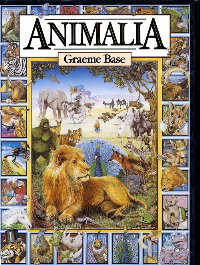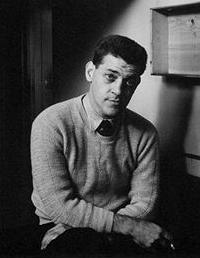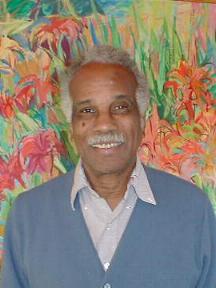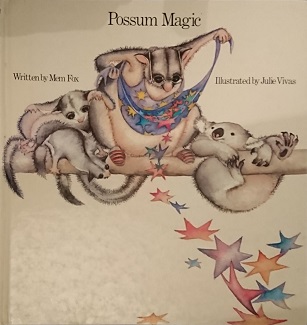
Animalia is an illustrated children's book by Graeme Base. It was originally published in 1986, followed by a tenth anniversary edition in 1996, and a 25th anniversary edition in 2012. Over four million copies have been sold worldwide. A special numbered and signed anniversary edition was also published in 1996, with an embossed gold jacket.

William Steig was an American cartoonist, illustrator and writer of children's books, best known for the picture book Shrek!, which inspired the film series of the same name, as well as others that included Sylvester and the Magic Pebble, Abel's Island, and Doctor De Soto. He was the U.S. nominee for both of the biennial, international Hans Christian Andersen Awards, as a children's book illustrator in 1982 and a writer in 1988.

Chris Van Allsburg is an American writer and illustrator of children's books. He has won two Caldecott Medals for U.S. picture book illustration, for Jumanji (1981) and The Polar Express (1985), both of which he also wrote, and were later adapted as successful motion pictures. He was also a Caldecott runner-up in 1980 for The Garden of Abdul Gasazi. For his contribution as a children's illustrator, he was a 1986 U.S. nominee for the biennial International Hans Christian Andersen Award, the highest international recognition for creators of children's books. He received the honorary degree of Doctor of Humane Letters from the University of Michigan in April 2012.
Leo Dillon and Diane Dillon were American illustrators of children's books and adult paperback book and magazine covers. One obituary of Leo called the work of the husband-and-wife team "a seamless amalgam of both their hands". In more than 50 years, they created more than 100 speculative fiction book and magazine covers together as well as much interior artwork. Essentially all of their work in that field was joint.

Lamu or Lamu Town is a small town on Lamu Island, which in turn is a part of the Lamu Archipelago in Kenya. Situated 341 kilometres (212 mi) by road northeast of Mombasa that ends at Mokowe Jetty, from where the sea channel has to be crossed to reach Lamu Island. It is the headquarters of Lamu County and a UNESCO World Heritage Site.
Tom Feelings was an artist, cartoonist, children's book illustrator, author, teacher, and activist. He focused on the African-American experience in his work. His most famous book is The Middle Passage: White Ships/Black Cargo.
Graeme Rowland Base is a British-Australian author and artist of picture books. He is perhaps best known for his second book, Animalia published in 1986, and third book The Eleventh Hour which was released in 1989.
Michael Foreman is a British author and illustrator, one of the best-known and most prolific creators of children's books. He won the 1982 and 1989 Kate Greenaway Medals for British children's book illustration and he was a commended runner-up five times.

David Wiesner is an American illustrator and writer of children's books, known best for picture books including some that tell stories without words. As an illustrator he has won three Caldecott Medals recognizing the year's "most distinguished American picture book for children" and he was one of five finalists in 2008 for the biennial, international Hans Christian Andersen Award, the highest recognition available for creators of children's books.

Jerry Pinkney was an American illustrator and writer of children's literature. Pinkney illustrated over 100 books since 1964, including picture books, nonfiction titles and novels. Pinkney's works addressed diverse themes and were usually done in watercolors.
Mitsumasa Anno was a Japanese illustrator and writer of children's books, known best for picture books with few or no words. He received the international Hans Christian Andersen Medal in 1984 for his "lasting contribution to children's literature."

Yankee in Oz is a 1972 Oz novel by Ruth Plumly Thompson. It was the first published by The International Wizard of Oz Club. A letter from the Henry Regnery Company, which bought Reilly & Lee, is reproduced in the front indicating the publisher's blessing for the new Oz book to appear. It was originally written in 1959, but because the Oz books were not selling, it was not published. The first two editions of the book were published in 8½ x 11 inch format and running only 94 pages. This was done at the request of illustrator Dick Martin to reduce the number of required illustrations and to show them closer to the actual size they were drawn. The second printing (1986) featured a new cover, with the first edition artwork reprinted preceding the title page. The third printing (2007) is standard Oz book size. Its cover is a gaudier redesign of the second edition cover. The book also features maps by James E. Haff, and as such, Thompson correctly places the Winkie Country in the west of Oz.
Berlie Doherty is an English novelist, poet, playwright and screenwriter. She is best known for children's books, for which she has twice won the Carnegie Medal. She has also written novels for adults, plays for theatre and radio, television series and libretti for children's opera.

Anthony Edward Tudor Browne is a British writer and illustrator of children's books, primarily picture books. Browne has written or illustrated over fifty books, and received the Hans Christian Andersen Award in 2000. From 2009 to 2011 he was Children's Laureate.

Ashley Frederick Bryan was an American writer and illustrator of children's books. Most of his subjects are from the African-American experience. He was U.S. nominee for the Hans Christian Andersen Award in 2006 and he won the Laura Ingalls Wilder Award for his contribution to American children's literature in 2009. His picture book Freedom Over Me was short-listed for the 2016 Kirkus Prize and received a Newbery Honor.

Possum Magic is a 1983 children's picture book by Australian author Mem Fox, and illustrated by Julie Vivas. It concerns a young female possum, named Hush, who becomes invisible and has a number of adventures. In 2001, a film was made by the American company Weston Woods and narrated by the author.
Adrienne Adams was a children's book illustrator as well as an artist and writer of children's books. She won two Caldecott Honors and in 1973 she was awarded the Rutgers Award for overall contributions to children’s literature. In 1977, she was awarded the University of Southern Mississippi Medallion.

Bruce McMillan is a contemporary American author of children books, photo-illustrator and watercolor artist living in Shapleigh, Maine. Born in Massachusetts, he grew up in Bangor, and Kennebunk, Maine. He received a degree in biology from the University of Maine. In addition to his 45 children's books, seven of them set in Iceland, he has authored two books of humor, Punography, featured in Life magazine, and Punography Too. His interest in biology is often reflected in his books' topics. He has published three genres of children's picture books - concept books, nonfiction, and fiction. In 2006, he was honored by the Maine Library Association with the Katahdin Award honoring his outstanding body of work of children's literature in Maine.
Patricia Marie Cummings is an American writer and illustrator of children's books.

Gavin John Bishop is an author and illustrator, from Invercargill, New Zealand. He is known for illustrating books from prominent New Zealand authors, including Joy Cowley and Margaret Mahy. Bishop's first published picture book was Mrs McGinty and the Bizarre Plant, published in 1981 by Oxford University Press.













